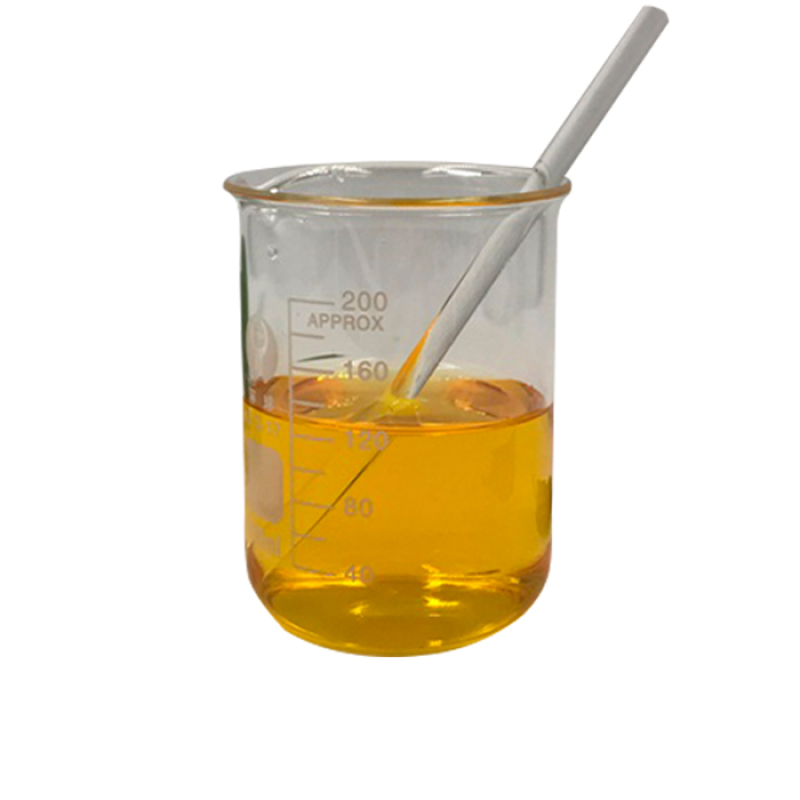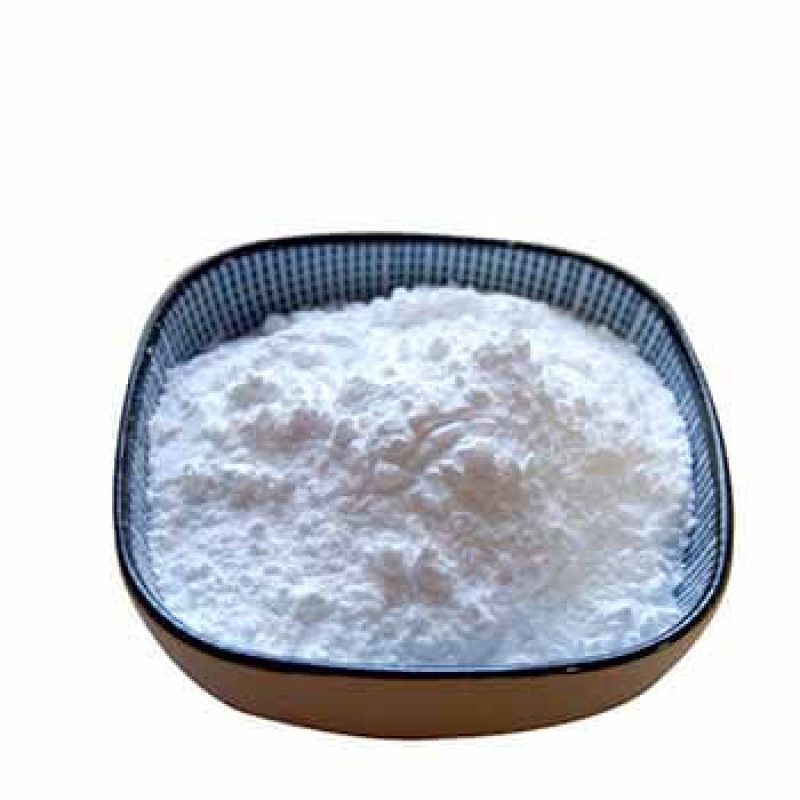Products Description of Eucalyptus oil CAS#8000-48-4Eucalyptus oil is one of the most commonly used essential oils. With the increasing popularity of candies and chewing gum, one of the main uses of eucalyptus oil is as a food additive. Synthetic fragrances have a refreshing and clean appeal.It has a great influence on the cosmetic industry (such as toothpaste and oral hygiene products) and other household cleaning products industry, as well as the fragrance of perfumes.
Contact Now
Products Description of Kavain CAS#3155-48-4White crystalline powder, soluble in organic solvents such as methanol, ethanol, DMSO, etc., derived from Kava pepper.Kavain Chemical PropertiesMelting point 142-148 °CBoiling point 432.6±45.0 °C(Predicted)density 1.15±0.1 g/cm3(Predicted)storage temp. Amber Vial, -20°C Freezer, Under inert atmospheresolubility Chloroform (Slightly), Ethyl Acetate (Slightly)color Off-White to Pale YellowBRN 177877Stability:Light and Moisture SensitiveInChIInChI=1S/C14H14O3/c1-16-13-9-12(17-14(15)10-13)8-7-11-5-3-2-4-6-11/h
Contact Now
Products Description of Magnesium oxide CAS#1309-48-4Magnesium oxide is commonly known as magnesia, also known as magnesium oxide. It is a typical alkaline earth metal oxide with the chemical formula MgO. It is a white powder with a melting point of 2852℃, a boiling point of 3600℃ and a relative density of 3.58 (25℃). It is soluble in acid and ammonium salt solutions. It reacts slowly with water to form magnesium hydroxide. It can be dissolved in a carbon dioxide aqueous solution to form magnesium bicarbonate.
Contact Now
Products Description of Para Chloro Phenol (4-Chloro Phenol) CAS#106-48-9Parachlorophenol, also known as 4-chlorophenol, is an organic compound with the chemical formula C6H5ClO. It is a white crystalline powder, slightly soluble in water, easily soluble in ethanol, ether, chloroform, and benzene.
Contact Now
Products Description of VANPLAST 202 CAS#61790-48-5White powderVANPLAST 202 Chemical PropertiesBoiling point 1683.39℃[at 101 325 Pa]vapor pressure 0Pa at 25℃Water Solubility 1.714ng/L at 25℃LogP41.08 at 25℃EPA Substance Registry SystemSulfonic acids, petroleum, barium salts (61790-48-5)Factory and Equipment ShowFast delivery timeInventory 2-3 working days New production 7-10 working days
Contact Now
Products Description of Polyvinylpyrrolidone CAS#9003-39-8Polyvinylpyrrolidone, abbreviated as PVP, is a polymer of vinylpyrrolidone. Due to its different degree of polymerization, it is divided into soluble PVP and insoluble PVPP (polyvinylpolypyrrolidone). The relative molecular mass of soluble PVP is 8000-10000. It can be used as a precipitant and precipitate with polyphenols. With this method, it is easy for residual PVP to remain in the wine.
Contact Now
Products Description of 6-Methyluracil CAS#626-48-26-Methyluracil is a colorless crystal. The melting point is 311-312℃, and it has also been reported to be 270-280℃ (decomposition). It is soluble in water, hot ethanol and alkaline solution, and slightly soluble in ether.
Contact Now
Products Description of Cobalt Acetate CAS#71-48-7Cobalt acetate is a purple-red crystal that is easily deliquescent and is soluble in water, acid and ethanol.Cobalt acetate Chemical PropertiesMelting point 298 °C (dec.)(lit.)density 1.7043g/cm3solubility Aqueous Acid (Slightly), Water (Slightly)form Powdercolor Pale pink to purpleWater Solubility Soluble in water, alcohol, dilute acids and pentyl acetate(tetrahydrate).Sensitive HygroscopicMerck 14,2433Stability:HygroscopicInChIKeyQAHREYKOYSIQPH-UHFFFAOYSA-LLogP-0.285 (est)CAS DataBase Referenc
Contact Now
Products Description of Choline chloride CAS#67-48-1Choline chloride was developed by the Agricultural Technology Institute of the Ministry of Agriculture, Forestry and Fisheries of Japan in 1964, and registered as a plant growth regulator in 1987. It also became vitamin B4. Common choline chlorides on the market are divided into plant-carrier choline chloride and white carbon black (silicon dioxide) as a carrier choline chloride. my country's production is about 400,000 tons, accounting for more than 50% of the global production capacity.
Contact Now
Products Description of Dibutylamine CAS#111-92-2Pure di-n-butylamine is a colorless liquid, m.p.-60℃ (-61.9℃), b.p.159℃ (48℃/1.73kPa), n20D1.4177, relative density 0.767 (20℃), f.p.41℃, soluble in water, acetone and benzene, and easily soluble in ethanol and ether.Dibutylamine Chemical PropertiesMelting point −62 °C(lit.)Boiling point 159 °C(lit.)density 0.767 g/mL at 25 °C(lit.)vapor density 4.46 (vs air)vapor pressure 1.9 mm Hg ( 20 °C)refractive index n20/D 1.417(lit.)Fp 106 °Fstorage temp. Store below +30°C.so
Contact Now
Products Description of POLYGLYCERYL-4 LAURATE CAS#75798-42-4Colorless liquidFactory and Equipment ShowFast delivery timeInventory 2-3 working days New production 7-10 working days
Contact Now
Products Description of 4-Chromanone CAS#491-37-2White crystals.
Contact Now
Dimethylolurea Chemical PropertiesMelting point 125 °C (dec.)(lit.)Boiling point 224.08°C (rough estimate)density 1.34refractive index 1.4610 (estimate)Fp 100 °Cstorage temp. 2-8°Cpka12.14±0.46(Predicted)form powder to crystalcolor White to Almost whiteWater Solubility 150 g/LMerck 14,6968BRN 1811870InChIKeyQUBQYFYWUJJAAK-UHFFFAOYSA-NLogP-2.610 (est)CAS DataBase Reference140-95-4(CAS DataBase Reference)NIST Chemistry ReferenceDimethanolurea(140-95-4)EPA Substance Registry SystemDimethylolurea (140-95-4) Safety InformationHaz
Contact Now
Products Description of 4-Hydroxycoumarin CAS#1076-38-64-Hydroxycoumarin is a coumarin derivative, one of the most versatile heterocyclic scaffolds, commonly used in the synthesis of various organic compounds. 4-Hydroxycoumarin has electrophilic and nucleophilic properties. 4-Hydroxycoumarin appears as slightly yellow needle-shaped crystals.
Contact Now
Products Description of 4'-HydroxyacetophenoneCAS#99-93-4Since p-hydroxyacetophenone contains hydroxyl and ketone groups on the benzene ring in its molecule, it is often used as an intermediate in organic synthesis to react with other compounds to synthesize many important substances.
Contact Now
Products Description of 4-Acryloylmorpholine CAS#5117-12-4N-Acryloylmorpholine is a chemical substance with the molecular formula C7H11NO2.4-Acryloylmorpholine Chemical PropertiesMelting point −35 °C(lit.)Boiling point 158°C 50mmdensity 1.122 g/mL at 25 °C(lit.)vapor pressure 1.03-1.64Pa at 25-29.9℃refractive index n20/D 1.512(lit.)Fp >230 °Fstorage temp. 2-8°Csolubility Soluble in waterpka-1.08±0.20(Predicted)form Liquidcolor Colorless to yellowWater Solubility 1000g/L at 20℃Sensitive Light Sensi
Contact Now
Products Description of 4-Chloropyridinium chloride CAS#7379-35-34-Chloropyridine hydrochloride can be used as a pharmaceutical intermediate in laboratory organic synthesis and chemical pharmaceutical research and development.
Contact Now
Products Description of 4-Aminoisoquinoline CAS#23687-25-44-Aminoisoquinoline is a white powdery crystal.CAS No.
Contact Now
Products Description of Tetrahydro-4-pyranol CAS#2081-44-9Tetrahydropyran-4-ol is a colorless transparent liquid at room temperature and pressure. It has good polarity and hydrophilicity and can be used as a solvent in organic synthesis. The structure of tetrahydropyran-4-ol contains a tetrahydropyran unit and an active hydroxyl structure, and has high chemical reactivity and diverse chemical conversion properties. The tetrahydropyran-4-ol molecule contains a hydroxyl structure, so it has a certain polarity.
Contact Now
Products Description of Tetrahydrothiopyran-4-one CAS#1072-72-6Tetrahydrothiopyran-4-one (4H-Thiopyran-4-one,tetrahydro-), the molecular formula is C5H8OS.Tetrahydrothiopyran-4-one Chemical PropertiesMelting point 60-64 °C (lit.)Boiling point 140.82°C (estimate)density 1.050 (estimate)refractive index 1.5100 (estimate)storage temp. Inert atmosphere,Room Temperaturesolubility Acetonitrile (Slightly), Chloroform (Slightly)form Crystalline Solidcolor White to pale yellowBRN 106464InChIKeyOVRJVKCZJCNSOW-UHFFFAOYSA-NLogP0.490 (est)CAS DataBase Refer
Contact Now
Products Description of 4-Bromopyridine hydrochlorideCAS#19524-06-24-Bromopyridine hydrochloride is a white crystalline solid at room temperature and pressure. It has a certain degree of hygroscopicity and is easily deliquescent in water. It is often used as a coupling reagent and a precursor molecule of pyridine derivatives in organic synthetic chemistry. When used, it is often pre-treated with alkali to release 4-bromopyridine.
Contact Now
Products Description of 4-Chloroquinoline CAS#611-35-84-Chloroquinoline is a key intermediate commonly used in the synthesis of quinoline derivatives with important biological activities.
Contact Now
Products Description of 4-Methylbenzenesulfonhydrazide CAS#1576-35-8p-Toluenesulfonylhydrazine, also known as 4-methylbenzenesulfonylhydrazine, is a white crystalline powder, easily soluble in alkali, soluble in methanol, ethanol and butanone, slightly soluble in water and aldehydes, and insoluble in benzene and toluene. It is used as a foaming agent for natural rubber, synthetic rubber and a variety of plastics, making plastics and rubber products have fine closed-cell structures, small shrinkage and high tear strength.
Contact Now
4-(1-Acetylpiperazin-4-yl)phenol CAS#67914-60-7Crystalline compound.
Contact Now































